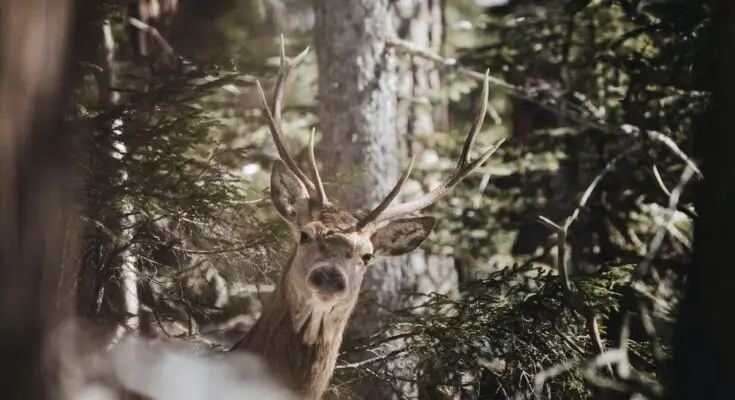A lot of people like going on deer hunts in the great outdoors. But it’s not easy to succeed without prior experience and training. There are some intriguing facts regarding shooting deer in the woods that you may not know, regardless of how experienced a hunter you are.
Here are eight interesting facts about hunting deer in the wild that you might not have heard of.
Hunting Deer is Ideal in the Morning or Evening
Hunting opportunities are most significant in the early morning or late evening when deer activity is highest. Deer like to sleep and hide during the day, making it harder for hunters to find them. Successful hunting requires careful preparation on the part of the hunter.
Hunting is Still the Most Efficient Method of Obtaining Food
While still hunting, the hunter goes silently and slowly through the forest searching for game, particularly deer. This method is preferable to cover more land and get closer to the deer than sitting in a tree stand or blind. To avoid being seen by deer, hunters should use camouflage gear and pay attention to wind patterns.
Attracting Wild Venison with the Use of Automated Feeders is Possible
Deer may be drawn to a specific area with an automatic deer feeder, a device that delivers food at regular intervals. Automatic deer feeders may be helpful, but hunters should only depend on them for a portion. Because of the predictable nature of the feeding schedule, deer may start avoiding the region.
Deer Have a Keen Ability to Hear and Smell Their Surroundings
Hunters may have difficulty sneaking up on deer because of their acute hearing and scent. While hunting, it’s crucial for hunters to use scent-blocking items and avoid using scented soaps and detergents. To further prevent being seen by the deer, they should face downwind.
A Deer’s Top Speed is 40 Miles Per Hour
A deer’s top speed is 40 miles per hour and is a speedy runner. Hunters should be ready to pursue wounded or shot deer. If you want a swift and merciful murder, you should also aim for the essential organs.
The Antlers of Each Species of Deer are Unique
The antlers of male deer, or bucks, may range widely in size and form. In contrast to the more forked antlers of the mule deer, the white-tailed kind has branches. Hunters who want to know what kind of deer they are shooting at should be acquainted with the various antler shapes and sizes.
It’s Preferable to Go Buck Hunting During the Rut
During the rutting season, male deer (bucks) are at their most aggressive and energetic—a buck’s vulnerability to being shot increases this time of year. Hunting bucks is at its peak in late October or early November during the rutting season.
Hunting Plays a Crucial Role in Protecting Wildlife
Hunting is vital to wildlife preservation efforts because it aids in population control by reducing the number of available habitats for deer. The ecological system may suffer if overpopulation causes habitat loss and subsequent famine. Hunting not only helps the economy, but it also helps animal conservation efforts.
The More You Know
How to Hunt Deer Like a Pro
There’s more to deer hunting than simply patience and accuracy. What makes all the difference is knowing when to hunt, where to put your shots, and how deer behave. Proper scouting, tracking, and weaponry may aid a successful hunt.
Hunting for Conservation
Sustainable hunting can stabilize animal populations. Sustainable hunting tactics, including obeying laws, paying fees and taxes, and adequately processing game, may safeguard deer populations and their habitats.
Automated Deer Feeder Benefits
Automatic deer feeders may attract deer, but use them wisely. Ethical and ethical hunting demands careful placement, selection, and avoiding overusing feeders. Hunters may maximize automatic deer feeders by studying the animals’ habits.
The Morality of Going on a Deer Hunt
Harvesting with Respect
During hunting, it’s essential to treat the animal with kindness and consideration. Killings should be quick and painless for ethical and practical reasons. To do this, it is necessary to use the right tools and position your shots correctly.
Minimizing Waste
Ethical hunters place a premium on conserving resources and limiting their footprint on the natural world. Donating leftover meat to people in need, turning animal bones and skins into craft materials, and composting animal waste are all examples of this kind of holistic animal care.
Cultivating a Respectful Hunting Culture
Promoting education and ethics in the hunting community is essential to fostering respect for the sport. Contributing to wildlife preservation and responsible hunting organizations, teaching younger generations about ethical hunting, and holding each other accountable are all methods to achieve this.
Conclusion
Many hunters find that hunting wild deer can be an exciting adventure. You’ll need smarts, skill, and perseverance. Understanding deer behavior and hunting strategies can help hunters succeed and conserve animals.
However, whether hunters use an automatic deer feeder or not, every hunter should prioritize safety and ethics.



